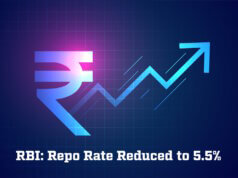Lack of policy support coupled with various state specific issues have led to a significant dip in wind energy capacity addition in the country. The 12th Five Year Plan targets 15,000 MW wind power capacity addition and the target for 2013 -14 is 2,500 MW, out of which, so far, only 1,100 MW has been installed. The Ministry of New and Renewable Energy envisages a capacity addition of 29,800 MW grid-interactive renewable power during the Five Year Plan period.
In a presentation on relevance of incentives in financing of wind power projects before the National Level Consultation on National Wind Energy Mission held in New Delhi on January 9th, 2014, Vivek Sharma, Director – Energy and Natural Resource Practice, CRISIL Infrastructure Advisory, attributed the fall in wind power capacity addition to delay on part of the MNRE in announcing Generation Based Incentives, discontinuation of accelerated depreciation and several state specific issues. He stressed on the need to adopt an integrated approach for dealing with the issues currently plaguing the sector and its further development.
Some of the main issues concerning the wind power sector, which according to Sharma need to be addressed, include evacuation capacity and transmission infrastructure, incentive certainty in terms of disbursement of GBI/removal of accelerated depreciation, off take guarantee, Renewable Purchase Obligation compliance, signing of Power Purchase Agreement, viability due to variability in state feed-in tariffs and Central Electricity Regulatory Commission tariff, long term clarity with regard to the Renewable Energy Certificate market, financial health of distribution utilities and land acquisition in purview of the new Land Acquisition Act.
Sharma recommended a number of key measures aimed at promoting the wind power sector. The measures call for seamless national grid integration, transmission fund for developing dedicated corridors, judicious adoption of ‘must run’ status, utilization of National Clean Energy Fund for subsidizing high transmission costs, states to be in line with the CERC when determining FITs, accelerated depreciation with caveats for development of micro, small and medium enterprises, recognition of the importance of RPO compliance and REC, support from state nodal agencies for land acquisition and regular tariff hikes for discoms and possible incentives for meeting RPO.
Presenting the industry’s view on incentives and financing for wind power projects at the meet, Dr. K. Kasthurirangaian, Chairman of the Indian Wind Power Association, made a strong case for reinstatement of accelerated depreciation. The MNRE is at present holding talks with the Ministry of Finance to reinstate accelerated depreciation. It was withdrawn in April 2012.
According to Dr. Kasthurirangaian, the wind power sector had become sick and was ailing because of withdrawal of accelerated depreciation. Citing various reasons why accelerated depreciation needed to be reinstated, he said that in addition to benefiting the MSME sector, wind power was cheap and non-polluting with no annual tariff increases. Availability of long term cheap power gives a competitive edge to MSMEs. Besides, those engaged in wind power generation are less dependent on grid-connected power. In 2012-13 as well as the current financial year, the wind power capacity addition was far below the target set under the 12th Five Year Plan leading to loss of revenues for the government.
Recognizing the importance of wind power, the Planning Commission had recommended establishment of a National Wind Energy Mission in the 12th Five Year Plan. The National Level Consultation was organized by the MNRE to get views and suggestions from various stakeholders on issues relating to the need and rational for a new National Wind Energy Mission.











